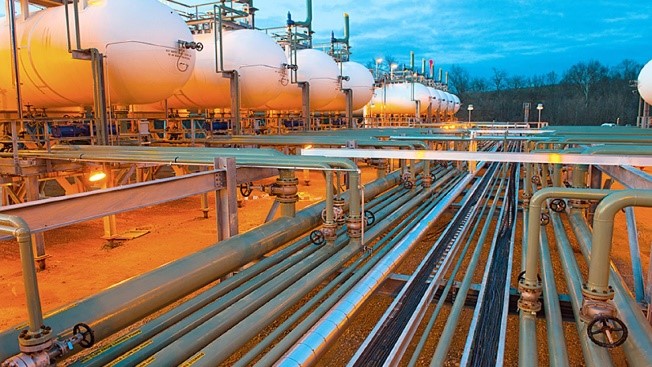UNIFIED TARIFF

Disclaimer: Copyright infringement not intended.
Context
- Petroleum and Natural Gas Regulatory Board has introduced implementation of Unified Tariff-a much awaited reform in natural gas sector.
Details
- The Petroleum and Natural GasRegulatory Board (PNGRB), announced it has amended the PNGRB (Determination of Natural Gas Pipeline Tariff) regulations to incorporate provisions for Unified Tariff for natural gas pipelines with a mission of “One Nation, One Grid and One tariff”.
Note: By "One Nation, One Grid and One tariff", the government aims to boost the consumption of natural gas in the country and increase its share in India's energy basket from current 6.2 per cent to 15 per cent by 2030.
New Regulations
- The Petroleum and Natural Gas Regulatory Board (PNGRB) has notified unified tariff of Rs 73.93 per metric million British thermal unit (MMBtu) for all the interconnected gas transmission pipelines owned / operated by multiple entities including Indian Oil Corporation Limited, Oil and Natural Gas Corporation Limited, GAIL (India) Limited, Pipeline Infrastructure Limited, Gujarat State Petronet Limited, Gujarat Gas Limited, Reliance Gas Pipelines Limited, GSPL India Gasnet Limited and GSPL India Transco Limited.
- With the commissioning of newer interconnected pipelines, the national gas grid will keep expanding for Unified tariff.
- These entities will get the tariff as per their entitlement while customers would pay Unified tariff.
- The difference between the same will be settled between the Pipeline entities for which a settlement mechanism has been notified.
Zones apportioned
- Based on the new regulations, PNGRB has notified a levelized Unified Tariff of Rs 73.93/MMBTU and created three tariff zones for Unified Tariff.
- The tariff will be apportioned over three zones, Zone 1 to Zone 3, with tariff of Rs 39.45/ MMBtu, Rs 74.97/ MMBtu and Rs 99.90/ MMBtu respectively.
-
- The first zone is up to a distance of 300 kms from gas source.
- The second zone is 300 – 1200 kms and
- Third zone is beyond 1200 kms.
The Zonal unified tariffs will be effective from 1st April 2023.
Significance
- The reform will specially benefit the consumers located in the far-flung areas where currently the additive tariff is applicable and facilitate the development of gas markets and vision of government to increase the gas utilisation in the country.
|
PETROLEUM AND NATURAL GAS REGULATORY BOARD (PNGRB) Petroleum and Natural Gas Regulatory Board (PNGRB) is a statutory body in India, constituted under the act of Parliament of India, namely Petroleum and Natural Gas Regulatory Board Act, 2006. Its primary functions include regulation of refining, transportation, distribution, storage, marketing, supply and sale of petroleum products and natural gas. |
Read: https://www.iasgyan.in/blogs/natural-gas-reserves-india-and-the-world
Read: https://www.iasgyan.in/ig-uploads/pdf/rstv41.pdf
Read: One Nation one Gas Grid: https://www.iasgyan.in/ig-uploads/pdf/rstv41.pdf
|
PRACTICE QUESTION Q. How does the Government intends to achieve the target of “One Nation, One Grid and One Tariff”? What steps are being taken in this direction? Describe. |






1.png)
